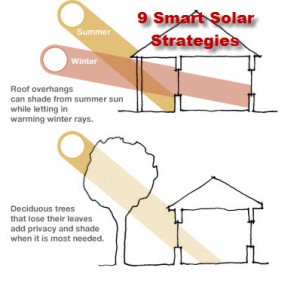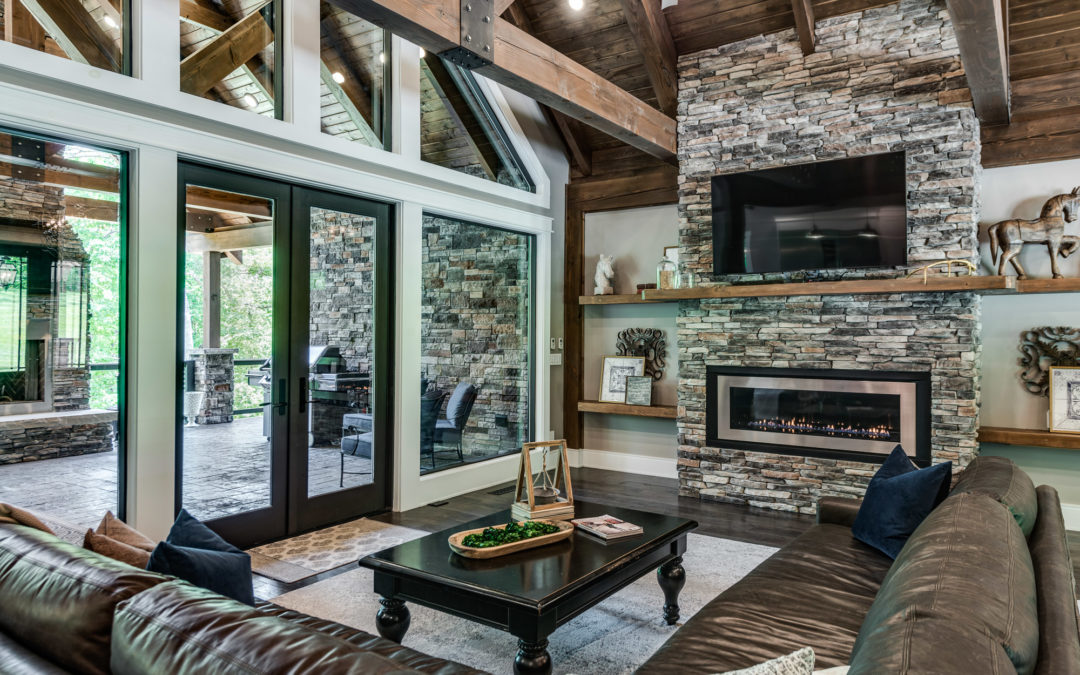10 Ways Solar Heating Can Make Your Log Home Warmer
Log Home Solar Heating: Letting the sun shine on your dream log and timber home will make it far more comfortable while saving you hundreds of dollars on energy bills.
 If you’ve ever been in the window seat while flying the friendly skies, you’ve likely noticed that homes far below are arranged into grid-like patterns. Homes all oriented to roadways, as if we somehow all worship the auto.
If you’ve ever been in the window seat while flying the friendly skies, you’ve likely noticed that homes far below are arranged into grid-like patterns. Homes all oriented to roadways, as if we somehow all worship the auto.
While this uniformity is convenient for city planners, the orientation to roads is often at odds to absorbing an abundant energy that’s free in nearly all climates—solar power.
In contrast, the craftsmen of yesteryear used a simple and inexpensive design technique to make their homes more comfortable: facing the long side of the home toward the sun to absorb its heat in winter months.
One can see this strategy employed in the ancient villas of Rome or in the missions of California. Call it passive solar design or simply smart construction, the craftsmen of yesteryear incorporated the sun’s path into the design of the structure, says the experts at the Log and Timber Homes Council.
This strategy was born out of necessity, since the builders of the past didn’t have sophisticated heating and cooling systems like we do today.
However, with the cost of energy costs doubling or quadrupling in many regions of the U.S. (homeowners are now spending an average of $2,000 a year) many are giving passive solar strategies a fresh look.
In most regions of the U.S. by simply orientating the home toward the sun, it will reduce its total energy costs by 30 to 40 percent. Get started with these strategies:
1) Bring Your Compass
If you plan on including some passive solar design, one should shop for land with a compass in hand and analyze each site’s potential. Your goal is a site with southern exposure.
Another way to analyze its potention is to take photos of your property at different times of day (and at different times of year, if possible) to weigh your orientation options.
One doesn’t need a large parcel of land to position the home to take advantage of the sun’s power. A half acre or even less, can provide enough room to angle the home to benefit from passive solar orientation. Investigate whether an angled placement on your site won’t run afoul of community covenants or city building codes.
2) Doesn’t Have To Be True South To Work
If possible the longer axis of the home, also known as the ridge line, should be oriented East to West. By facing the ridge line in that direction, the longer dimension of your home faces south and catches the sun. Although it is best to face the home directly south, it can be oriented up to 30 degrees away from due south and lose only five percent of the potential energy savings.
3) Consider Altering Terrain
Is your building site hilly or heavily wooded? You can still make a passive solar design an option if you are willing to alter the terrain and thin some trees.
4) Floor Plan Fine Tuning
Although any design can be used with passive solar, an open floor plan tends to work the best. An easy airflow helps disperse the energy absorbed from the sun, which radiates back into the home after sundown.
Planning the rooms with attention to the usage can save energy in other ways. Areas like storage rooms, garages, or laundry rooms can be situated on the home’s east or west “short side,” where they can act as an a thermal buffer.
5) Window Location & Eave Strategies
The sun is higher in the summer sky and lower in the winter sky. Designers use this constant to calculate window placement and the width of the roof overhang (sometimes called the “gull overhang”). The two architectural elements acting in concert, keep the high summer sun out while letting the lower winter sun penetrate deep within the home.
A host of variables will determine your design strategy, from the latitude of your building site and terrain, to the floor plan, wall height, and roof pitch.
6) Choose An Experienced Builder
A contractor or designer familiar with solar orientation will visit your site, preferably at different times of year, to understand how the topography of the land interacts with the sun’s path. Scale models can also provide the feedback on possible solar strategies.
7) Add More Thermal Mass
The energy advantage of a log and timber home is in its thermal mass, which means these homes stay cool in summer and warm in winter. But you can add additional thermal mass by installing tile floors in front of south-facing windows. These will hold heat better in winter and keeping rooms cooler in summer.
8) Window Options
The range of glazing possibilities today isn’t limited to just low-emissivity or “low-e” windows, which are typically the energy efficient option. One can specify different types of glazing on the windows to suit different orientations on the home.
For example, using heat-rejecting glazing on west windows, R-value glazing for north and east windows, and clear double-glazing on windows that are south facing.
9) Utilize Landscaping
Once your home is finished, become attuned to the pattern of air movement on your property and how it affects your home’s energy performance. Use this knowledge when creating your landscape strategy. For instance, evergreen trees on the north side of your home can buffer winter winds. Deciduous trees placed on the south, east or west can shade your home in the summer before dropping their leaves in the winter to let the sun shine in. One can also use this knowledge of sun and wind patterns for placing a hot tub, pool or vegetable garden.
Solar orientation costs very little to accomplish, yet if you plan well you’ll reap substantial rewards over the entire life of the home, in reduced energy costs and increased comfort.
Copyright 2014 Log and Timber Homes Council, part of the National Association of Homebuilders




